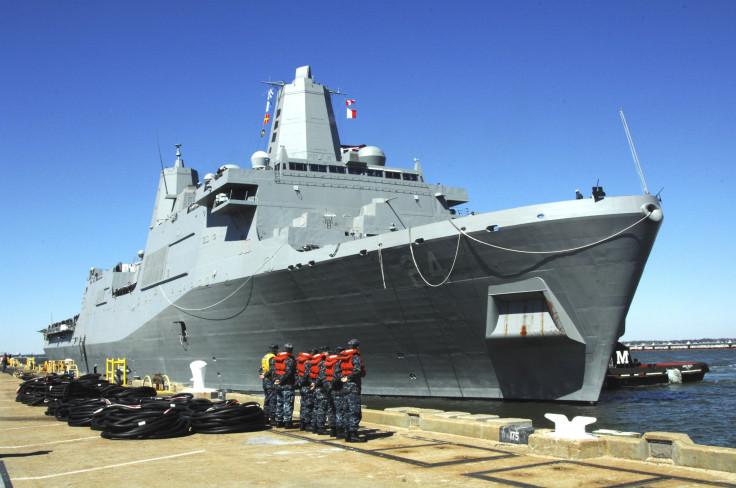Drumbeats Of War? US Navy Runs A Convoy Across The Atlantic, First Since Cold War

The United States military will participate in the Defender-Europe 2020 exercises scheduled to take place in April and May. The exercises will involve the deployment of about 20,000 U.S. forces along with 17,000 troops from other countries. The convoy across the Atlantic to prepare for the exercises is the first and largest of its kind since 1986 and is already underway.
The U.S 2nd Fleet issued a release stating that the aircraft carrier USS Dwight D. Eisenhower and its strike group, with P-8 Poseidon patrol aircraft and a U.S. submarine, is on its way and has "cleared the maritime battlespace.”
On Friday, Commander Troy Denison, director of current operations for US 2nd Fleet, told reporters via phone, "We obviously would practice this a lot in World War II. After that, not so much, but we still did practice it. But the last one we did was in 1986, so this is really the first time in quite a while that we've conducted a convoy operation."
Denison added that the Eisenhower strike group went a few days ahead of the convoy to "sanitize the area" and "ensure no submarines or surface units were there to interfere with the convoy," and that the simulated enemy was then reset "so the convoy could also have an encounter with them ... and react."
Following the Eisenhower strike group across the Atlantic is the convoy of ships, including the U.S. Military Sealift Command cargo ship USNS Benavidez plus merchant vehicle carriers escorted by the guided-missile cruiser USS Vella Gulf.
Kim Harriss, a supervisory marine transportation specialist with Military Sealift Command Atlantic, stressed the importance of the convoy and said, "In any sort of contested scenario or wartime scenario, over 90% of the combat power, the cargo, that gets from the United States over to the theater of operations is taken by sealift ... controlled by the Military Sealift Command, both through its organic assets and contract and commercial assets.”
The task of moving 1.3 million square feet of U.S. military equipment across the ocean is daunting enough in a peacetime exercise and even more so if facing armed resistance during a conflict. Any enemy today would be considered “sophisticated”. Commander Denison said, "An opposed transit is essentially a transit where you're likely or possibly going to encounter the enemy.”
Russia looms as the most likely enemy. It is not as strong as it was during the Cold War (1947-1991) but US commanders are concerned about its submarines that are quieter, more durable and armed with sub-launched missiles that could reach European capitals and vital ports. Navy officials now see the Atlantic as contested because of the subs.
Vice Admiral Andrew Lewis, commander of US 2nd Fleet, which oversees the western and North Atlantic, said recently, "Our ships can no longer expect to operate in a safe haven on the East Coast or merely cross the Atlantic unhindered.”
© Copyright IBTimes 2024. All rights reserved.





















